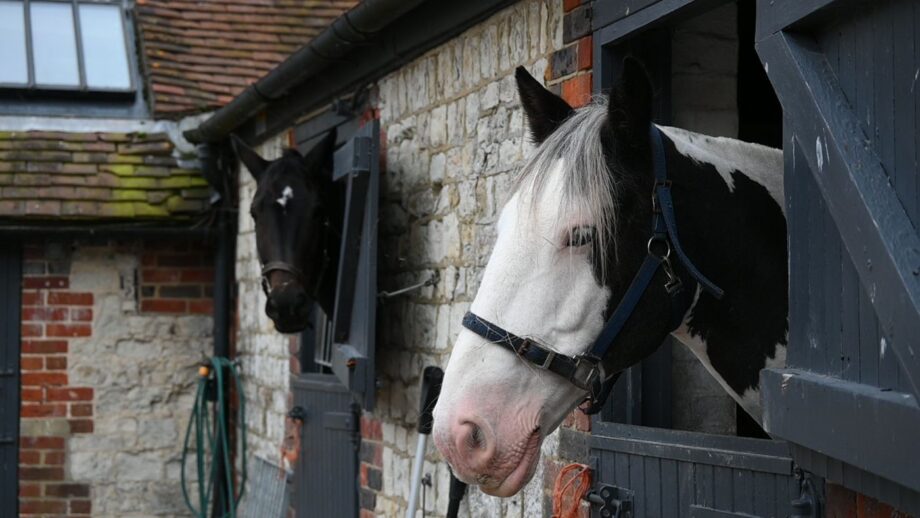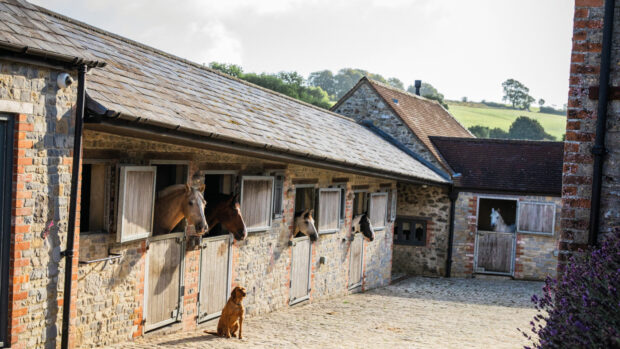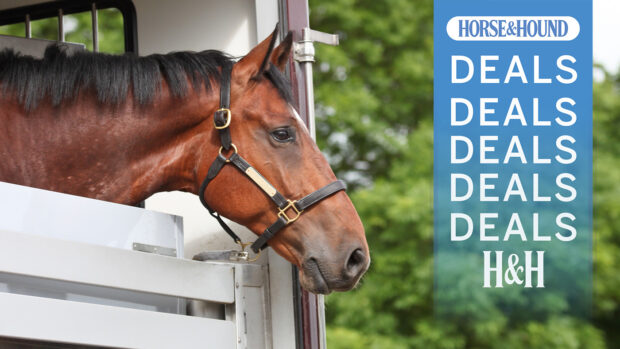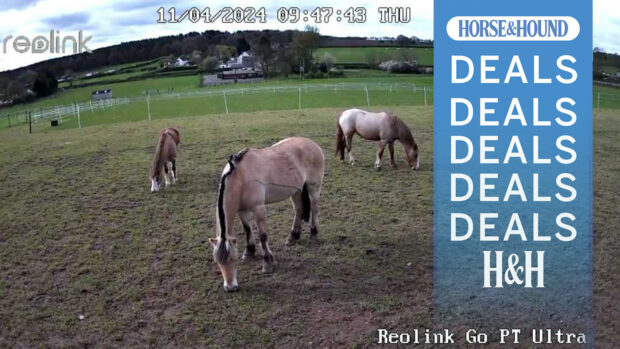Horse & Hound created this content as part of a paid partnership with Monarch Equestrian. The contents of this article are entirely independent and solely reflect the editorial opinion of Horse & Hound.
With hotter, drier summers now the UK norm, you’re probably wondering how to keep stables cool in summer.
Of course, all horse owners should ensure management is adapted to the hotter time of year.
“Horses need to be monitored closely when temperatures soar,” remarks Michael Thompson of Monarch. “Keeping a thermometer in a central location will make you aware of internal temperatures in buildings. Prolonged stable temperatures of more than 32ºC can be dangerous.”
Ensuring unlimited fresh water is essential.
“Our auto-drinkers ensure a constant and reliable supply as a horse’s water intake increases,” he adds. “Gentle exercise in the shade, such as on one of our covered walkers, gives horses a break from their stable with protection from the midday sun.”
There is much you can do to cool down a horse, such as opting for night-time turnout, or for instant relief you can cold hose and leave the horses to dry naturally. However, neither of these actions has a lasting impact if your horse has to return to a warm stable.
So, how can you adapt your horse’s stable to reduce the internal temperature? Is it possible to build cooler stables? And how can you ensure the effects aren’t reversed in winter?
How to keep stables cool: ventilation
Stagnant air is bad news for ammonia and dust build-up. Not only this, but it also increases humidity, which can make stables feel stuffy and unbearably warm.
“Stables can quickly become hotboxes in the summer if not properly ventilated,” warns Michael. “They can trap heat and humidity, making them uncomfortable and potentially dangerous for horses.
“Our designers implement proper ventilation into each design,” he continues. “Design features such as high ceilings, windows, and vents all allow for natural airflow, keeping the stable cool in summer.”
But how do vents work?
“Fresh air must enter the building at the eaves, or gutter level, and escape through a ridge of the roof, which is called a vented ridge,” explains Hugh Daly of Equus Works. “This works because fresh air enters through the eaves, warms and rises to escape from the vented ridge.
“In existing barns, cladding can be removed at the eaves to allow ingress of fresh air,” he adds. “A crossflow of air is essential, and all too often modern barns are closed off from fresh air.”
Hugh adds that, ideally, stables should have at least a 1x1m window on the back wall.
“This allows for seasonal temperature changes,” he explains. “Toughened glass with window bars will allow natural light all year round, and can be opened for a further source of fresh air in summer.
“We use turn-and-tilt windows to keep the elements out but allow air in.”
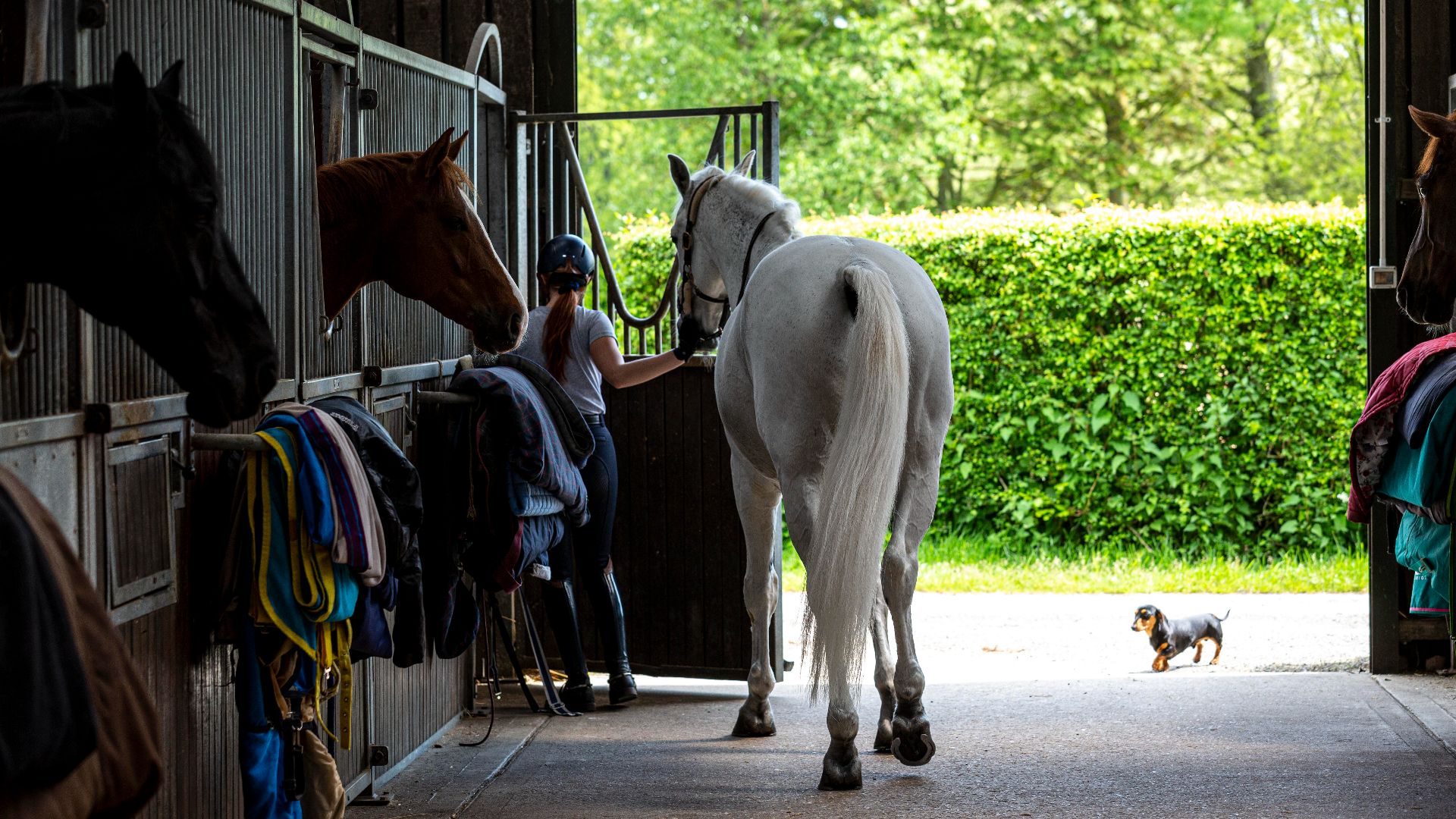
Removing barn cladding near the eaves boosts airflow. Credit: Andrew Sydenham
Constructing stables for optimal temperature
When considering how to keep stables cool, materials matter.
“Monarch’s polycarbonate roof sheets incorporate UV protection, heat blocking and multi-layered colour combinations for dispersing heat and light,” explains Michael.
“Our slate effect sheets allow for air to travel freely behind and underneath, ensuring a breathable roof,” he continues. However, breathability does mean compromising on warmth in winter. “We also offer insulated slate roof systems that provide tremendous thermal retention in the colder months.”
Hugh also recommends insulated roof sheets to both reflect heat in the summer and reduce heat loss in winter. While maximising natural light is important in stable construction, Hugh advises owners to avoid one common mistake.
“Roof light sheets, while letting the light in, bring the sun directly into stables and heat them up,” he warns. “In an American barn, we always recommend a vented light ridge over the walkway. That way, you get light without direct sun on the horses and a vent for warm air to escape from.”
Finally, the build position influences temperature.
“South-facing walls could be considered a heat source,” remarks Hugh, adding that insulated walls with internal stables positioned on the north side of a building can help guard against overheating.
Implementing cooling systems
Stable fans are a simple, low-investment method of keeping horses cool in stables. As well as boosting airflow for comfort, stable fans have many benefits, such as disrupting biting insects and dispersing ammonia build-up. Floor and wall-mounted fans are most commonly available.
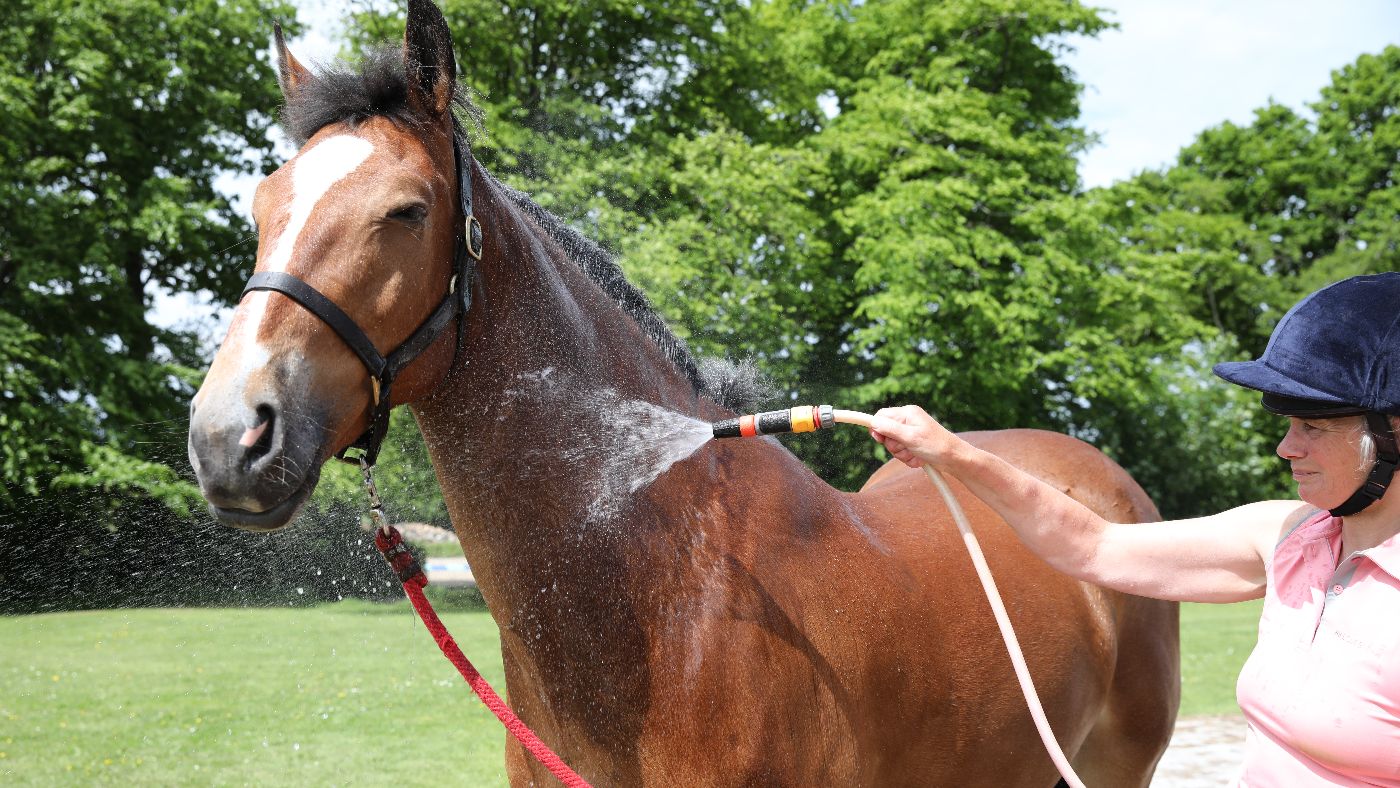
Hosing horses down can cool them in the short term, but the effects are temporary. Credit: Emma Herrod
Misting fans are a more sophisticated solution. They come in a variety of designs, from a portable fan setup for competitions, single-stable systems to large misting lines that can be suspended in the apex of a barn or marquee.
Koolfog’s high-pressure misting fans work by producing micron-sized water droplets that, while evaporating and turning to vapour, remove heat from the air, cooling the surrounding area.
“This process, called adiabatic cooling, reduces outdoor temperatures by as much as 18ºC,” explains Jason Coller, managing director at Koolfog. “It makes days where temperatures exceed even 38ºC comfortable.”
Systems like Koolfog’s come with pre-fabricated misting apparatus that is easy to install.
“Portable systems are delivered ready assembled and simply need to be wheeled into place and connected to a water supply – a standard yard tap is fine.” adds Jason.
What’s more, cooling in this way does not risk bedding waste.
“High-pressure systems like Koolfog’s produce a fine mist that evaporates before it reaches the ground, so it does not make bedding wet.”
- To stay up to date with all the breaking news from major shows throughout 2025, subscribe to the Horse & Hound website
You may also be interested in:

15 no-rinse washes that will keep your horse cool and refreshed

We spoke to the British team’s equine physio about cooling down your horse after riding – here’s what you need to know

Travelling horses in the heat – and what to do if you get stuck on the motorway

8 essential tips to help keep your horse cool when temperatures soar

Subscribe to Horse & Hound magazine today – and enjoy unlimited website access all year round

